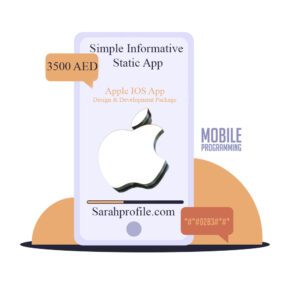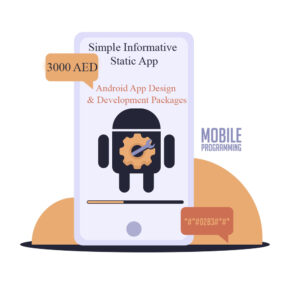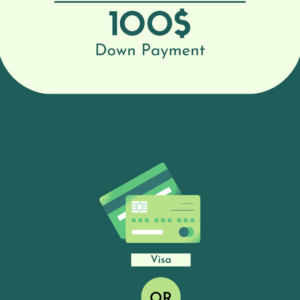
In today’s digital world, it’s essential to have a website that looks great and works perfectly across all devices. This is where responsive web design comes in. Responsive web design (RWD) ensures that your website adjusts and adapts to different screen sizes, whether on a desktop, tablet, or smartphone. In this article, we’ll cover some of the best responsive web design tips to help you optimize your website for a seamless user experience across all devices.
1. Use a Mobile-First Approach
A mobile-first approach is one of the most important principles of responsive web design. Since most users now browse the internet on mobile devices, designing for mobile screens first ensures that your website functions well on smaller screens. Once you’ve optimized your site for mobile, you can progressively enhance it for larger devices.
- Tip: Start designing for the smallest screen first and scale up, ensuring that your content fits and works well on mobile before adapting it for tablets and desktops.
2. Choose a Fluid Grid Layout (
A fluid grid layout is based on percentages instead of fixed pixel sizes. This allows elements to resize and reposition dynamically, depending on the screen width. This ensures that your website remains visually consistent and functional, no matter the screen size.
- Tip: Use relative units like percentages or ems instead of fixed pixel sizes to make sure your layout adapts smoothly to different screen widths.
Learn more about fluid grid layouts in CSS to create flexible and responsive designs.
3. Optimize Images for Mobile Devices
Large images can slow down page load times, especially on mobile devices with slower internet connections. Optimizing your images is crucial for responsive design. Use image formats like WebP or JPEG 2000, which provide better compression without sacrificing quality.
- Tip: Implement responsive image techniques using the
srcsetattribute in HTML. This allows the browser to choose the best image size based on the screen’s resolution and device width.
For more information on optimizing images for the web, check out this Google guide.
4. Use Media Queries
Media queries are one of the most powerful tools in responsive web design. They allow you to apply different CSS rules based on the characteristics of the device, such as the screen size, resolution, or orientation.
- Tip: Use media queries to set different styles for various breakpoints. For example, you might have one layout for screens larger than 1024px, another for tablets between 768px and 1024px, and yet another for small mobile screens below 768px.
Here’s an example of a simple media query:
@media (max-width: 768px) {
body {
font-size: 14px;
}
}
You can learn more about media queries in CSS for building responsive layouts.
5. Prioritize Content for Mobile
On mobile devices, screen real estate is limited. Prioritizing your website’s content and ensuring it’s easy to navigate is essential. Make sure that the most important elements, such as navigation, calls to action (CTAs), and essential information, are front and center.
- Tip: Simplify your layout and remove unnecessary elements on smaller screens. Use collapsible menus, accordions, and other space-saving features for better usability.
Check out these mobile web design best practices for more tips on prioritizing content for mobile users.
6. Test Your Website on Multiple Devices
Responsive web design isn’t just about coding; it’s about ensuring that your website functions properly across various devices. Use device emulators or real devices to test how your website behaves on smartphones, tablets, and desktops.
- Tip: Utilize tools like BrowserStack or Responsinator to test your website’s responsiveness across a range of devices and browsers.
Regularly testing your website will help you catch design and functionality issues early.
7. Make Navigation Easy and Accessible
Navigation plays a crucial role in user experience. For mobile users, you need to ensure that navigation is easy to use with touch gestures. This often means using a hamburger menu or collapsible navigation options that save space on small screens.
- Tip: Implement a responsive navigation menu that adapts based on the screen size. A typical approach for mobile devices is the hamburger menu, which hides the navigation links behind a button until clicked.
Here’s a guide on creating a responsive navigation menu that works across all devices.
8. Focus on Fast Load Times
Page load speed is a critical aspect of both responsive design and SEO. A slow-loading website can lead to a poor user experience, especially on mobile devices with limited bandwidth. Google also considers page speed as a ranking factor, so it’s essential to optimize your website for fast loading times.
- Tip: Minimize the use of large files, avoid unnecessary plugins, and optimize scripts. Tools like Google PageSpeed Insights can help you analyze and improve your site’s load time.
9. Use Flexible Typography
Typography should also be responsive to different screen sizes. Text that’s too large or too small can ruin the user experience. Use relative units like em or rem instead of fixed pixel sizes for font sizes, making them adjust based on the viewport.
- Tip: Set base font sizes in percentages or ems, and use media queries to adjust font sizes for larger or smaller screens.
Check out this guide on responsive typography to learn more about how to optimize fonts for different devices.
10. Ensure Touchscreen Compatibility
Since mobile users often interact with websites using their fingers, it’s important to ensure that all interactive elements are optimized for touchscreens. Buttons should be large enough to tap easily, and form fields should be easy to fill out on small screens.
- Tip: Use touch-friendly elements like larger buttons, forms with appropriate input fields, and swipeable content where necessary.
You can read more about making websites touchscreen-friendly in this article from Smashing Magazine.
Conclusion
Responsive web design is essential for delivering a great user experience across all devices. By following these responsive web design tips, you can ensure that your website is mobile-friendly, fast, and functional, ultimately boosting your SEO rankings and enhancing user engagement.
If you’re ready to implement responsive web design techniques, check out these resources to help you get started:
- CSS-Tricks Guide to Responsive Web Design
- Google Web Fundamentals: Responsive Web Design
- BrowserStack Device Testing
By prioritizing user experience, fast load times, and mobile-first design, your website will be well-equipped to succeed in today’s multi-device world.
web development Package
-
web development
Professional E-Commerce Website Development Using Shopify
$200,00 Add to cartRated 0 out of 5 -
web development
Dynamic Website
Rated 0 out of 5$822,00Original price was: $822,00.$273,00Current price is: $273,00. Add to cart -
web development
E-commerce Website
Rated 4.00 out of 5$822,00Original price was: $822,00.$200,00Current price is: $200,00. Add to cart













